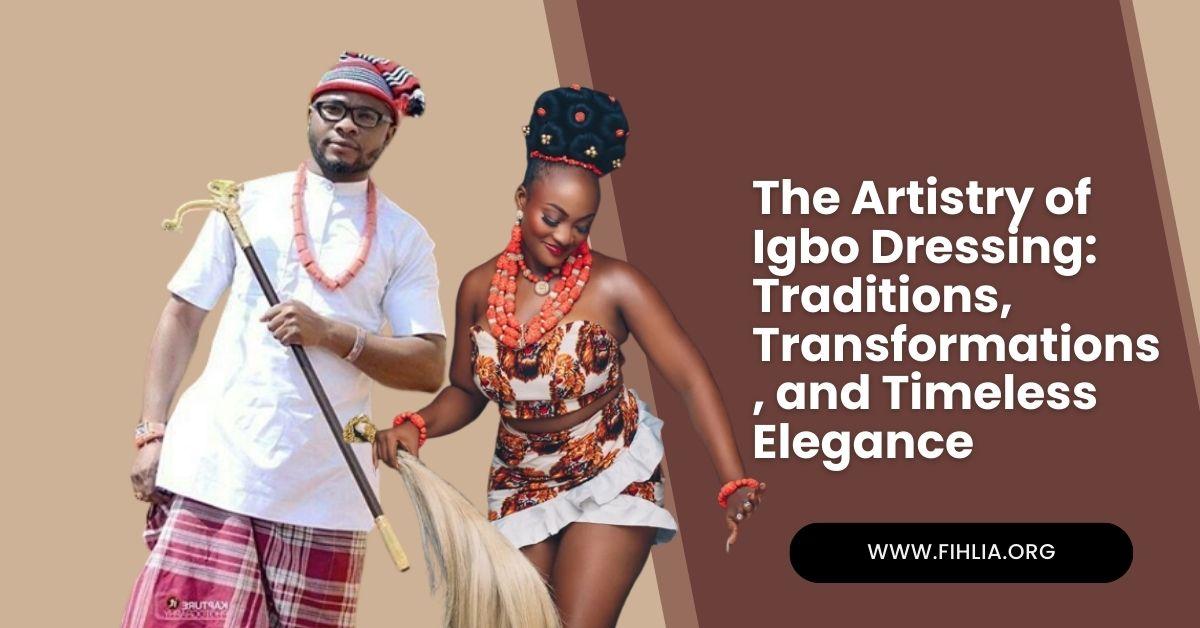The attire of the Igbo people is a fascinating tapestry of traditions that reflect their cultural heritage, values, and timeless elegance. Rooted in centuries-old customs, Igbo dressing has evolved over time, blending tradition with modern influences. In this article, we journey through the intricate world of Igbo dressing, exploring its historical origins and contemporary expressions.
Traditional Attire: A Window to the Past
Traditionally, Igbo attire was characterized by simplicity, with clothing primarily serving the purpose of concealing private parts. Elders were often fully clothed, while children remained nude from birth until they reached puberty. At that juncture, they were deemed to have “something to hide,” marking their transition into more clothing.
Ornaments and Body Art: Expressions of Identity
While clothing was minimal, ornaments and body art held significant cultural and spiritual importance. Beads, worn around the waist, were not merely accessories but held spiritual significance. Uli body art, akin to Western tattoos, adorned both men and women. These intricate patterns and shapes, applied using natural dyes, were expressions of identity and artistic prowess.
Traditional Child Carrying: A Time-Honored Practice
One of the most enduring traditions in Igbo culture is the method of carrying infants. Women would carry their babies on their backs, secured with a strip of clothing that was knotted at the chest. This practice, prevalent across various African ethnic groups, has evolved into modern child carriers but retains its cultural significance.
Modesty and Adornment: The Igbo Woman’s Attire
In traditional Igbo society, women typically did not cover their breast areas. Maidens would wear short wrappers adorned with beads around their waists, along with necklaces and other ornaments. The combination of beads and vibrant wrappers was not only a form of decoration but also a means of self-expression.
Wrappers for All: Unisex Elegance
Both men and women wore wrappers, although the styles and patterns varied. Men’s attire often consisted of loin cloths, skillfully wrapped around their waist and between their legs before being fastened at the back. In modern times, traditional wear for men includes the iconic red cap or black round cap, paired with a free short or long-cut top and pants or a wrapper. The lionhead pattern (isi agu) remains immensely popular among men.
Evolving Elegance: Contemporary Igbo Dressing
In today’s world, Igbo dressing has adapted to contemporary fashion sensibilities while preserving its core elements. Women often choose to wear George wrappers paired with lace tops, hollandaise fabrics, and Western-inspired clothing. The blending of traditional and modern elements allows for a unique fusion of styles that reflects both heritage and personal taste.
In conclusion, Igbo dressing is a captivating blend of tradition, artistry, and cultural identity. From the simplicity of traditional attire to the intricacies of body art and ornamentation, Igbo dressing tells a story of a people deeply connected to their roots. The evolving styles of contemporary Igbo dressing are a testament to the adaptability and timeless elegance of this rich cultural heritage.

